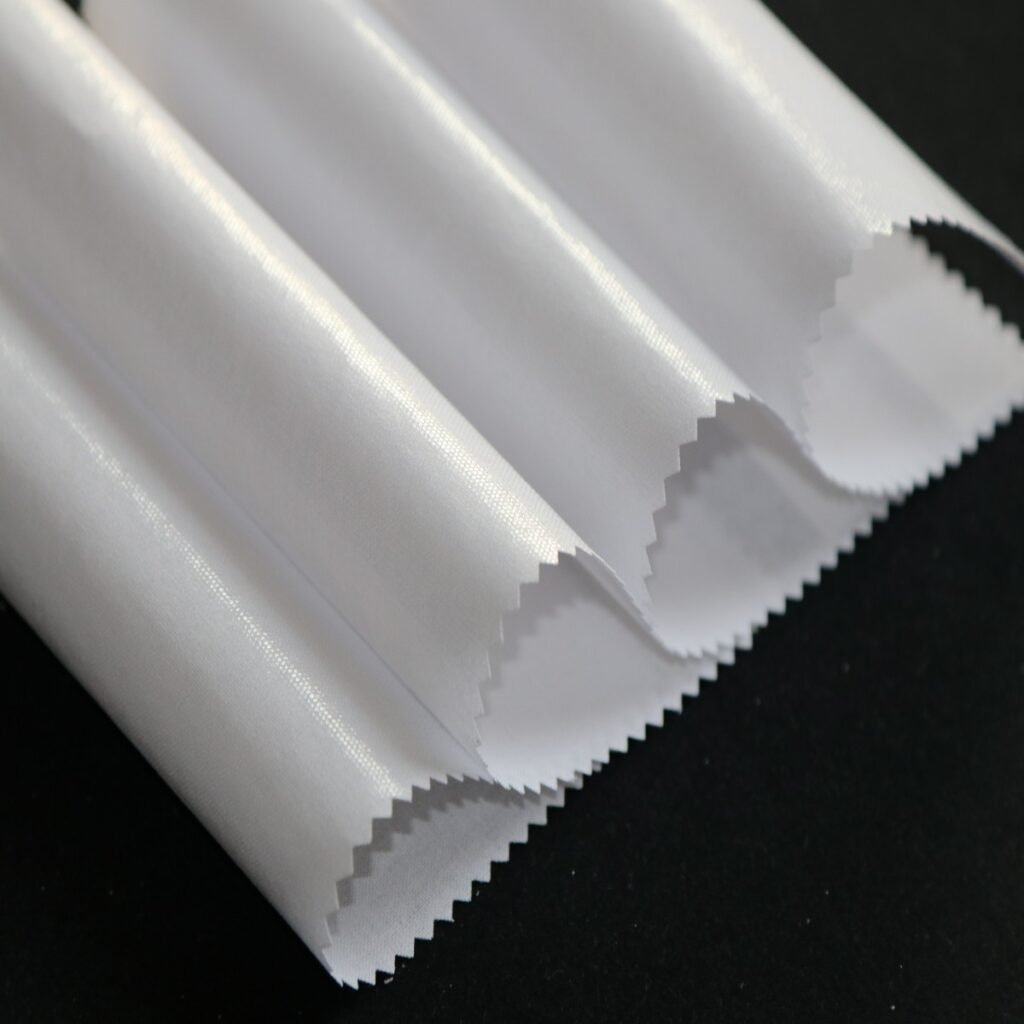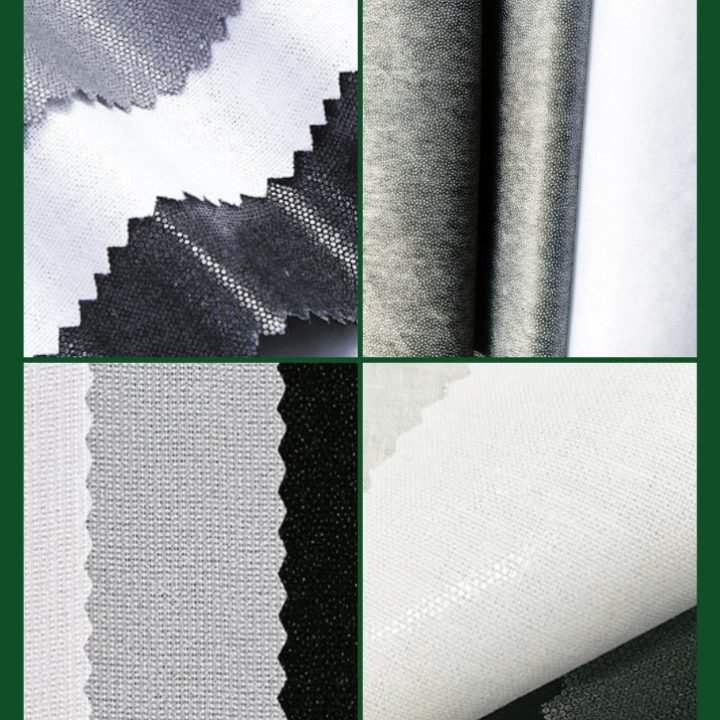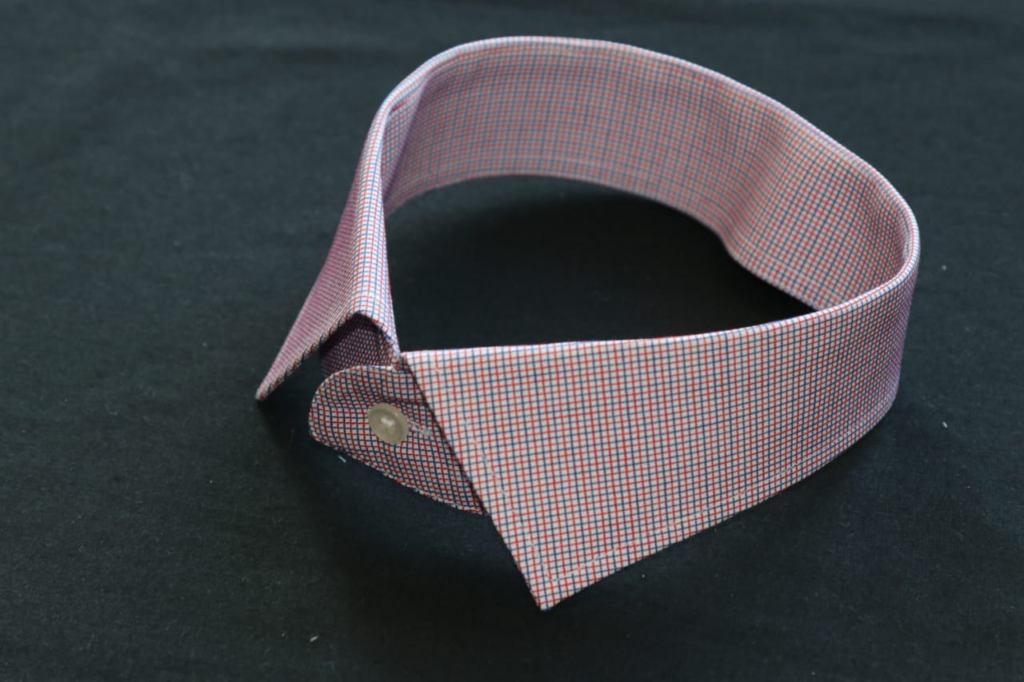Introduction
Did you know that more than 70% of a garment’s final look and durability depends on interlining? Surprising, right? Yet many manufacturers still treat it as an afterthought.
Let’s be clear interlining is not just a hidden layer. It’s the foundation of a well-made garment. Without it, collars collapse, blazers lose structure, and uniforms wear out faster. With the right interlining, however, your garments hold shape, last longer, and feel more comfortable for the wearer.
So, what exactly is interlining? In simple words, it’s a textile layer placed between the outer fabric and the lining. It adds strength, shape, and stability. For you as a manufacturer, the right interlining choice directly affects quality, customer satisfaction, and even brand reputation.
That’s why this guide is here. You’ll learn:
- What interlining is and how it’s different from lining and interfacing.
- The main types of interlining—woven, nonwoven, and knit.
- Fusible vs. non-fusible interlining and when to use each.
- The best interlining for shirts, suits, outerwear, uniforms, and luxury garments.
- Common mistakes and practical tips to avoid costly errors.
Ready? Let’s explore why interlining is the backbone of professional garment manufacturing.

What Is Interlining In Garments?
Interlining is a textile layer that sits between the outer fabric and the inner lining. You don’t see it, but you can feel its impact in how a garment looks and performs. It adds shape. It builds structure. It improves durability.
Think of a shirt collar that stays firm after many washes. Or a blazer that holds its form instead of sagging. That strength comes from the right interlining. Without it, garments look flat, lose shape quickly, and wear out faster.
Now, let’s clear up the difference between lining, interlining, and interfacing. Lining covers the inside of a garment to give it a clean finish and more comfort. Interlining goes in between layers to add body and support. Interfacing is different again. It reinforces specific areas like collars, cuffs, and waistbands where stiffness is needed.
Types Of Interlining Fabric
Interlining is not one-size-fits-all. Different fabrics, designs, and garment purposes call for different types. You can group interlinings by material, adhesion method, or end use. Let’s go through each.
Interlining Based on Material
Woven interlining is made just like regular fabric. Yarns are woven together to create a strong and breathable layer. You often use it in suits, blazers, and formal wear. It gives garments structure and a sharp, professional finish.
Nonwoven interlining is different. Instead of weaving, fibers are bonded together. It is affordable, versatile, and easy to apply. That’s why it’s common in mass production. If you want speed and cost efficiency, nonwoven interlining is a practical choice.
Knit interlining is soft and stretchable. It works best for knitwear, sportswear, and garments that need flexibility. Because it stretches, it moves with the fabric instead of holding it back.
Interlining Based on Adhesion
Fusible interlining comes with a resin coating. You bond it to fabric using heat and pressure. It is quick, clean, and efficient. That’s why many manufacturers rely on it for bulk production.
Non-fusible interlining is stitched in by hand or machine. It takes more time, but it gives garments a natural drape. You often see it in luxury clothing where finish matters more than speed.
Interlining Based on End Use
Soft interlining is lightweight and flexible. It is perfect for shirts, dresses, and blouses that need comfort and flow.
Hard interlining is stiff and strong. You use it in collars, cuffs, waistbands, uniforms, and workwear. It ensures garments hold their shape and last longer.
When you match the right interlining with the right fabric, your garments look better, feel better, and perform better.

How To Choose The Best Interlining Fabric
Choosing interlining is not guesswork. You need to test, compare, and match it carefully. Here are the main points you should check before making a decision.
First, always match the weight of the interlining with the outer fabric. A heavy interlining will make the garment stiff. A very light one won’t give enough support. Test both together until you find the right balance.
Next, think about the finish you want. Do you want a soft, smooth feel for shirts and dresses? Or a crisp, firm look for collars, cuffs, and blazers? The right interlining helps you achieve that effect.
Now, focus on durability. Wash the sample and check the result. A poor-quality interlining will bubble, shrink, or peel. That creates customer complaints and weakens your brand.
If you use fusible interlining, check the adhesion carefully. Apply the correct temperature, time, and pressure. Make sure there is no bubbling or peeling after washing.
Also, consider comfort and breathability. If you are producing shirts, uniforms, or garments worn for long hours, choose an interlining that allows air to pass through. This makes the garment lighter and more comfortable.
Finally, balance cost with performance. Cheaper interlinings may save money at first, but they reduce product quality. A high-quality option may cost more, but it lasts longer and reduces rework.
When you test each of these factors, you select interlining that matches your fabric, improves garment quality, and keeps your customers satisfied.
Best Interlining For Different Garments
Choosing the right interlining can transform the way your garment looks and performs. It controls structure, strength, and comfort. While the fabric may catch the eye, the hidden interlining decides how well a shirt, blazer, or coat holds up. Let’s go step by step and see which interlining works best for different garments.
Best Interlining For Shirts
Shirts rely heavily on interlining for collars, cuffs, and plackets. For collars, go with a soft woven fusible interlining. It keeps the collar in shape while still feeling comfortable. You get a clean, professional look without stiffness.
Now, let’s look at cuffs and plackets. These areas face constant movement and frequent washing. Choose a durable yet flexible fusible interlining. It gives sharp edges, holds the shape, and still allows natural flexibility.
Best Interlining For Suits And Blazers
Suits and blazers need structure. You want them to look sharp and professional. Here, a woven fusible interlining works best. It adds body to the lapels and front panels. At the same time, it drapes naturally with the outer fabric. The result is a polished and tailored finish.
Best Interlining For Outerwear
Outerwear such as coats and jackets requires more than just shape. It also needs insulation. In this case, use nonwoven or knit interlining. Nonwoven interlining provides warmth and thickness. Knit interlining offers stretch and comfort. Together, they keep outerwear both functional and wearable.
Best Interlining For Uniforms And Workwear
Uniforms and workwear face tough conditions. They must survive frequent washes and heavy use. That’s why a hard woven interlining is the right choice. It gives strength and durability. Collars, plackets, and waistbands stay in shape even after long hours of wear.
Best Interlining For Luxury Garments
Luxury garments demand extra care. Instead of fusible types, use a non-fusible woven interlining. Tailors usually hand-sew it into the garment. This technique ensures a natural drape and avoids stiffness. It takes more effort, but the result is a refined, high-end finish.
The best interlining depends on the garment’s purpose.
A shirt needs balance, a suit needs structure, outerwear needs insulation, uniforms need strength, and luxury pieces need finesse.
Always match interlining to the fabric and end use. That way, your garments will not only look better but also last longer.

Common Mistakes In Selecting Interlining
When you select interlining, small mistakes can create big problems. The first mistake is choosing the wrong weight. If you go too stiff, the garment feels rigid and uncomfortable. If you go too soft, the garment loses shape. Always match the weight of the interlining with the outer fabric.
Another common mistake is ignoring proper fusing conditions. You must control temperature, time, and pressure. If the heat is too high or the pressure too low, the bond will fail. The result is bubbling, peeling, or weak adhesion. To avoid this, always follow the supplier’s guidelines.
Finally, many people forget about aftercare. Washing or dry cleaning can change interlining performance. If it shrinks or loses strength, the whole garment suffers. Always test wash resistance before full production.
Best Practices For Using Interlining In Garments
Using interlining correctly ensures your garments keep their shape and last longer. The first best practice is testing. Always test shrinkage and adhesion before bulk production. A small trial run helps you catch problems early and prevents costly mistakes.
Next, focus on equipment. Calibrate your fusing machines regularly. Even small changes in temperature, pressure, or timing can affect adhesion. Proper calibration guarantees consistent results across all batches.
Sourcing also matters. Work only with reliable interlining suppliers. Trusted suppliers provide consistent quality, technical support, and detailed usage guidelines. This step saves you from production issues later.
Finally, think about sustainability. Opt for eco-friendly interlining options, such as biodegradable or recycled materials. These choices reduce environmental impact while still delivering performance.
By following these practices, you not only improve garment quality but also make your production process more efficient and responsible.
So, What Is The Best Interlining?
There is no single best interlining for every garment. The right choice always depends on the fabric, the design, and the final use. You must match the interlining to the purpose of your garment.
For shirts, go with a soft woven fusible interlining. It shapes collars and cuffs while keeping the fabric light and comfortable. Jackets need more strength. In this case, choose a strong woven fusible interlining. It gives structure and a crisp, professional look.
Luxury garments require a different approach. Here, non-fusible woven interlining works best. Tailors hand-sew it into the fabric, which creates a natural drape and a refined finish. On the other hand, mass production needs speed and consistency. A high-quality fusible nonwoven interlining offers efficiency and reliable results.
So, the best interlining is not one type. It is always the one that fits your fabric, your design, and your customer’s needs.

Conclusion
Interlining is not just a hidden layer. It is the foundation of garment quality, structure, and durability. There is no single best interlining for every garment. The right choice always depends on your fabric, design, and end use.
For shirts, use soft woven fusibles. For jackets, choose strong woven types. For uniforms, go with hard woven interlining. For luxury garments, select hand-sewn non-fusibles. In mass production, high-quality fusible nonwovens deliver speed and consistency.
Always test before bulk production. Partner with reliable suppliers. When you match interlining correctly, your garments look sharper, last longer, and satisfy your customers.
FAQs
What Is The Purpose Of Interlining In Garments?
Interlining provides structure, shape, and durability. It supports collars, cuffs, and panels, helping garments maintain form, last longer, and look professional.
How Is Interlining Different From Lining And Interfacing?
Interlining adds strength and body between layers. Lining improves comfort and finish inside garments. Interfacing reinforces specific areas like collars, cuffs, or waistbands where stiffness is required.
What Are The Main Types Of Interlining Fabric?
The main types include woven, nonwoven, and knit. Each type offers unique strength, flexibility, and cost advantages depending on fabric type and garment purpose.
When Should I Use Fusible Interlining Instead Of Non-Fusible?
Use fusible interlining for speed, efficiency, and mass production. Choose non-fusible when you need natural drape, hand-sewn finishes, or high-end garment detailing.
Which Interlining Is Best For Shirt Collars And Cuffs?
Soft woven fusible interlining is best for shirt collars and cuffs. It provides shape, strength, and durability without making the fabric overly stiff.
Can Interlining Affect Garment Comfort And Breathability?
Yes, it can. Choosing heavy or non-breathable interlining may restrict airflow. Lighter, breathable options ensure garments remain comfortable for extended wear.
How Do I Choose The Best Interlining For Lightweight Fabrics?
Match interlining weight carefully with the outer fabric. Use soft, lightweight, and breathable options to maintain natural drape and avoid stiffness in delicate garments.
What Problems Happen With Poor Quality Fusible Interlining?
Low-quality fusible interlining may bubble, peel, or shrink after washing. These defects reduce garment durability, compromise appearance, and damage brand reputation.
Are There Eco-Friendly Interlining Fabrics Available?
Yes. Options include biodegradable, recycled, and sustainable interlinings. These reduce environmental impact while maintaining garment performance, strength, and professional finish.
How Do I Test Interlining Before Bulk Production?
Always run wash and adhesion tests. Check shrinkage, peeling, and bonding strength. Testing ensures the interlining matches fabric requirements before full-scale production.
Contact Us today to get the high-quality interlining for your garments business.

